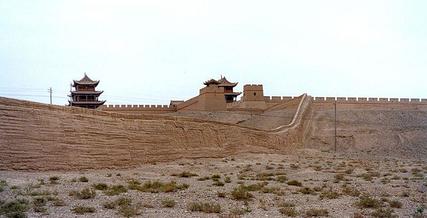|
What is adobe? Adobe in its simplest form is a sun dried brick of clay, sand and other earthen materials. It has been around for around at least since 3800 bc in Egypt and may extend even farther back in history than that. It has been around so long because when done correctly adobe is a strong building material that is suitable for many climates even rainy ones. Origin of the word adobe can be traced back to the Egyptians and it transformed only a little bit over the intervening 5000 + years. It was given it current spelling and usage when the word was assimilated from Arabic to Spanish and then the English language just co opted it from there.  What has been built with adobe bricks? Anything and everything has been built with adobe over the years from simple peasant homes, mosques, and even most of the Great Wall of China. It can be used to build single story or multistory buildings. The benefits of adobe building Adobe can be incredibly cost effective to build with and the materials are literally everywhere. In many cases the soil, rock and timber put into adobe structures can all be sourced from within just miles of the building site which really cuts down on the transportation costs of building a home. The environmental benefits of adobe when compared to other building materials are incredible high. They have very little embodied energy put into them and generate little to no greenhouse gases in their construction. If they are made of all natural materials ie. no cement or steel they can be completely returned to the earth with no ill effects. They can also be very energy efficient when it comes to heating and cooling. They will trap heat from the sun in its walls and release it at night into the interior of the structure for nighttime heat. Over all adobe is a great method of building and it should be given consideration if you want to build a home. Sources: I, Ruud Zwart [CC BY-SA 2.5 nl (http://creativecommons.org/licenses/by-sa/2.5/nl/deed.en), GFDL (http://www.gnu.org/copyleft/fdl.html), CC-BY-SA-3.0 (http://creativecommons.org/licenses/by-sa/3.0/) or FAL], via Wikimedia Commons By User:Doron (Own work) [GFDL (http://www.gnu.org/copyleft/fdl.html) or CC-BY-SA-3.0 (http://creativecommons.org/licenses/by-sa/3.0/)], via Wikimedia Commons https://www.nps.gov/tps/how-to-preserve/briefs/5-adobe-buildings.htm#adobe http://www.adobemfg.com/el-pueblito-estates/adobe-history.asp
0 Comments
Leave a Reply. |
AuthorHello my name is Josh Larson and I am the creator of the Green Living Library. Here on the blog you will find updates to content found in the Green Living Library as well as stories from those living the sustainable life already. Archives
December 2021
Categories
All
|